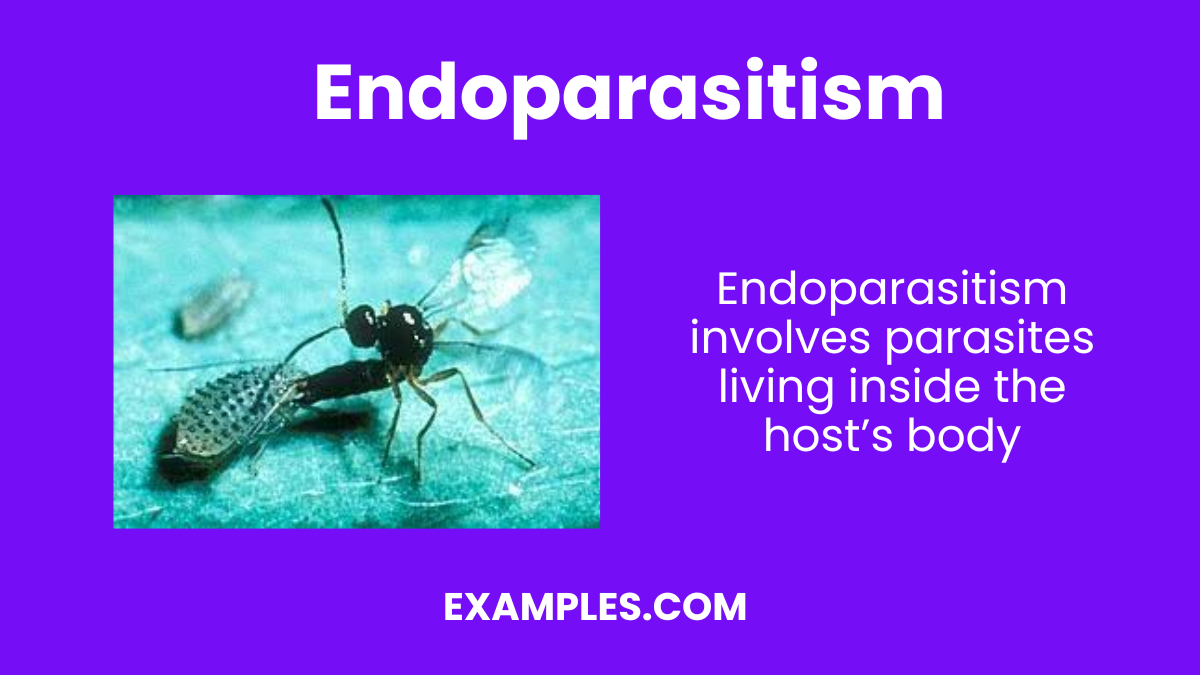Which of the following best describes parasitism?
Both organisms benefit
One organism benefits while the other is harmed
Both organisms are harmed
Both organisms are unaffected

Parasitism is a fascinating and complex biological interaction where one organism, the parasite, lives on or in another organism, the host, causing it harm and often gaining nutrients at the host’s expense. This guide delves into the intricacies of parasitic relationships, exploring how they affect ecosystems, the evolutionary arms race between parasites and their hosts, and the balance of nature. Teachers and students alike will find valuable insights into the survival strategies of parasites and the impacts of these interactions on host species.
Parasitism is a symbiotic relationship where one organism, the parasite, benefits at the expense of the other, the host. Unlike predators, parasites typically do not kill their hosts, and many have complex life cycles involving multiple host species. Examples include tapeworms in mammals, where the parasite absorbs nutrients through its host’s digestive system, and mistletoe plants, which draw water and nutrients from their host trees.
The quintessential example of parasitism can be found in the relationship between the malaria parasite, Plasmodium, and its hosts, humans, and mosquito vectors. Plasmodium species undergo crucial parts of their life cycle within human and mosquito bodies, causing severe illness in humans while benefiting from both organisms for reproduction and spread. This relationship highlights the severe health impacts parasites can have on human populations and the complexity of parasitic life cycles.
Parasitism represents one of nature’s most complex and intriguing symbiotic relationships, where one organism, the parasite, benefits at the expense of another, the host. This interaction plays a significant role in regulating population dynamics and maintaining ecological balance. The following examples showcase the diversity of parasitic relationships across various ecosystems, providing teachers and students with insights into the adaptability and survival strategies of parasites.
Parasitism is a complex interaction where one organism, the parasite, benefits at the expense of another, the host. Understanding the different types of parasitism can help educators and students grasp the diversity and impact of these relationships within ecosystems. Here are some key types:
Ectoparasitism occurs when the parasite lives on the exterior of the host. Common examples include ticks and lice that attach to the skin of mammals to feed on their blood.

Endoparasitism involves parasites living inside the host’s body. Tapeworms and other intestinal parasites are classic examples, residing within the digestive tracts of animals.
Brood Parasitism is unique to certain bird species like cuckoos, which lay their eggs in the nests of other bird species, leaving the host bird to raise their offspring.
Social Parasitism is found in species that exploit the social behaviors of a host species. An example is certain ant species that rely on the labor of another ant colony to survive.
Kleptoparasitism involves stealing food or resources gathered by another organism. Seagulls often engage in this behavior by taking food from other birds.
Parasitoidism is a borderline case between parasitism and predation, where the parasite eventually kills its host. This is common in some wasp species that lay their eggs inside a host insect.
Parasitism is driven by a variety of ecological and evolutionary factors. Here are eight key causes, each explained in a single line:
Parasitic infections in humans can range from mild to severe, affecting millions worldwide. These organisms live off their host, causing various health issues. Educators can use these examples to teach students about the importance of hygiene, healthcare, and the global impact of parasitic diseases.
Having a parasite can lead to symptoms like stomach pain, diarrhea, fatigue, and malnutrition, depending on the parasite type and infection severity.
Symptoms like unexplained weight loss, stomach pain, diarrhea, or itching around the anus may indicate a parasitic infection. Medical tests can confirm their presence.
Parasites can range from harmless to life-threatening, causing diseases like malaria and toxoplasmosis. Their danger depends on the parasite type, infection severity, and host health.
Parasitism in relationships refers to one organism (the parasite) benefiting at the expense of another (the host), often leading to harm or discomfort for the host.
Parasitism represents a fascinating aspect of biological diversity, showcasing the myriad strategies organisms employ to survive and reproduce. By examining the different types of parasitism, students can gain a deeper understanding of ecological interactions and the delicate balance within natural ecosystems. This knowledge not only enriches their appreciation of the natural world but also underscores the importance of studying parasitism within the broader context of biology and ecology.
Text prompt
Add Tone
Types of Parasitism
Causes of Parasitism
Which of the following best describes parasitism?
Both organisms benefit
One organism benefits while the other is harmed
Both organisms are harmed
Both organisms are unaffected
Which of the following is an example of a parasitic relationship?
Bee and flower
Tick and dog
Cow and grass
Shark and remora
What type of parasite lives inside the host’s body?
Ectoparasite
Endoparasite
Facultative parasite
Epiparasite
Which organism is an example of an ectoparasite?
Tapeworm
Plasmodium
Flea
Ascaris
Malaria is caused by which type of parasite?
Bacteria
Virus
Fungus
Protozoan
Which of the following is a parasitic plant?
Oak tree
Mistletoe
Rose bush
Pine tree
What is the primary mode of transmission for the parasite that causes Lyme disease?
Airborne
Waterborne
Tick bite
Direct contact
How does the parasite Toxoplasma gondii primarily infect humans?
Through contaminated water
By consuming undercooked meat
Through mosquito bites
By skin contact
Which of the following describes a host in a parasitic relationship?
The organism that benefits
The organism that provides a benefit
The organism that is harmed
The organism that remains unaffected
Tapeworms are examples of which type of parasite?
Ectoparasites
Endoparasites
Facultative parasites
Epiparasites
Before you leave, take our quick quiz to enhance your learning!

